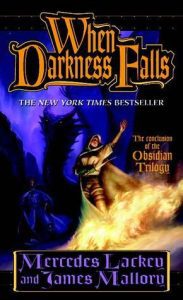Title: Layla and Majnun
Author: Nizami Ganjavi
First published January 1, 1192
256 pages, Paperback
ISBN: 9781857821611 (ISBN10: 1857821610)
Rating: 4.02
Overview
Henryk Sienkiewicz’s timeless masterpiece, The Teutonic Knights, is a tale of chivalry, war, and destiny. The story follows the journey of Macko, a seasoned warrior, and his young nephew, Zbyszko, as they unite with the people of Poland and Lithuania to fight against the oppressive religious military order, the Teutonic Knights.
The cast of characters is unforgettable, including Jurand, a bitter fighter consumed with revenge, and his daughter, Danusia, a girl of twelve who must confront the barbarity of the German knighthood. The novel is set against a backdrop of lush forests, dangerous marshes, and winter blizzards that blanket the world in a white wonderland.
The customs of knights are explored in depth, including their code of honor and feelings of love. The story culminates in one of the most important battles in medieval history, the Battle of Grunwald.
Originally published in 1900, this translation by Miroslaw Lipinski captures the fluidity of the English language while remaining faithful to the original Polish. The Teutonic Knights is a masterpiece that stands the test of time, reminding us of the importance of honor, courage, and destiny.
About the Author
Have you heard of Nizami Ganjavi? He was an incredible Persian poet who is widely regarded as the greatest romantic epic poet in Persian literature.
What made him stand out was his unique style – he brought a colloquial and realistic touch to the Persian epic. Nizami Ganjavi’s heritage is highly valued and celebrated by Azerbaijan, Iran, Afghanistan, and Tajikistan.
Editoral Review
Layla and Majnun is an epic romance written by Nizami Ganjavi in the 12th century. The book tells the story of two lovers, Layla and Majnun, whose love for each other is deemed forbidden by societal norms.
The author’s writing style is lyrical and poetic, seamlessly weaving together elements of history, folklore, and spirituality in the narrative. The novel is set in the Middle East and follows the lives of Layla and Majnun, who are infatuated with each other from a young age.
However, their love is not accepted by their families, and they are forced to keep their feelings hidden. As they grow older, their love intensifies, and they become consumed by their passion for each other, leading to a tragic ending.
Layla and Majnun is historically significant as it is considered one of the greatest works of Persian literature. It has influenced many writers and artists over the centuries, and its themes of love, sacrifice, and loss continue to resonate with readers today.
The book also highlights the importance of individual freedom and the powerlessness of societal norms over love. The strength of the book lies in Nizami’s ability to craft a compelling and emotionally charged story.
The characters are well-developed, and the author’s descriptions of their innermost thoughts and feelings add depth to the narrative. The plot structure is intricately woven, with various subplots that add to the overall impact of the novel.
However, the book does have its limitations. The language used can be challenging for some readers, making it a difficult read for those who are not accustomed to the Persian style of writing.
Additionally, some may find the plot to be slow-paced, lacking in action or suspense, and the ending can be viewed as predictable. Overall, Layla and Majnun is a valuable addition to the world of literature.
It is a timeless masterpiece that explores the complexities of human emotions and the power of love. Its themes are universal and relatable to people of all ages and cultures.
The book is recommended to those who enjoy epic romance and are interested in exploring different cultures and histories. It is a must-read for anyone who wants to gain a deeper understanding of the power and limitations of love.
The book deserves five stars for its literary merits and cultural significance.



